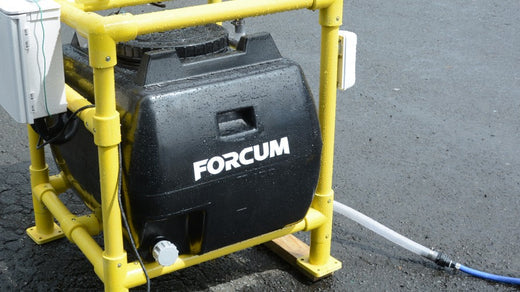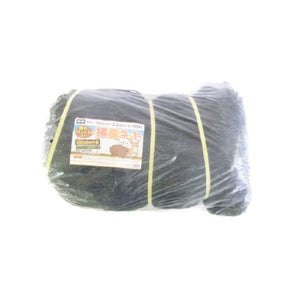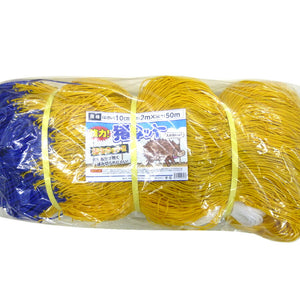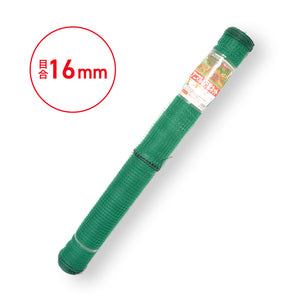Specified domestic animal infectious diseases such as avian influenza, foot-and-mouth disease, and swine fever (CSF) have become widely recognized not only by producers but also by general consumers through media reports.
When these epidemics occur, producers suffer huge economic losses and risk reputational damage. Even for diseases other than specific domestic animal infectious diseases, the impact on management due to decline in weight gain and reproductive performance cannot be ignored.
What should we know to minimize the damage caused by infectious diseases in livestock? We interviewed Professor Masuo Sueyoshi of the Department of Veterinary Medicine, Faculty of Agriculture, University of Miyazaki, who is a researcher in the field of livestock hygiene and an expert in epidemic prevention.
Profile of Professor Masuo Sueyoshi
In April 2012, he became a professor at the Department of Veterinary Medicine, Faculty of Agriculture, University of Miyazaki. He has been involved in research in the field of livestock health for many years, and as a leading expert in this field, he communicates the importance of epidemic prevention through monitoring and providing information on livestock infectious diseases.
In addition to teaching and engaging in human resource development, he continues to work vigorously at the field level to work on improving literacy for epidemic prevention.

Instead of treating or dealing with illness after it occurs, prevent it before it occurs
This time, Yasuda of our Refactory became an interviewer and asked about the current state of infectious diseases in Japan, the points of epidemic prevention, and recommendations for future epidemic prevention systems.
* During the main talk, we wore a mask to prevent infectious diseases. I'm removing the mask only when shooting.◎I heard that Professor Sueyoshi has been engaged in research on epidemic prevention for many years.

Professor Sueyoshi: My research is to protect animals from disease, and if I were to compare it to the role of a human health center, I would work to maintain the health of animals based on "regular health checkups." Virulent infectious diseases of domestic animals such as highly pathogenic avian influenza and swine fever, which are widely recognized, are not subject to treatment in the first place and culling measures are taken to prevent the spread of disease, but other animal diseases The ultimate goal is to protect the health of animals by preventing them before they become ill, rather than treating them after they become ill.
Specifically, through monitoring, we are working to quantify and visualize the presence of pathogenic factors and deficiencies in preventing epidemics before a disease occurs, and to announce and raise awareness. is. If a malignant infectious disease occurs, we have to slaughter it to prevent its spread. Before that happens, my research is to protect the livelihoods of animals as well as producers by preventing epidemics as much as possible.
It's just that the concept of epidemic prevention and prevention is more difficult to spread than treatment. For example, the discussion about vaccination against the new coronavirus is a good example of the difficulty in conveying the idea of prevention.
Vaccination can reduce the risk of serious illness, but it does not prevent infection. However, many people mistakenly understand that vaccination prevents infection. In principle, prevention is the action taken before the disease occurs. For this reason, people tend to think that it did not occur because it was prevented, or that it did not occur even if it was not prevented. It is difficult to directly evaluate the results of post-outbreak vaccine prevention, unlike treatment, because it is difficult to see immediately.
◎It is true that there is an aspect of human psychology in which a sense of crisis does not increase until something happens.
Professor Sueyoshi: I think that how to change such awareness is an important part.
When I talk to producers and people involved in epidemic prevention, do you know the difference between disinfection and sterilization in the first place? I would like to ask you a question.
Sterilization is the removal of all microorganisms present. On the other hand, disinfection refers to reducing the number of microorganisms and sterilizing or reducing pathogenic microorganisms to a level that does not cause infectious diseases.
In other words, disinfection does not mean that all microorganisms are removed. Knowing this, we can give people the awareness to work on more essential epidemic prevention, instead of thinking, "If you step on a disinfecting mat, you'll be fine."
I believe that it is my role to carefully explain these aspects using data and evidence. By actively disclosing information and building relationships of trust, we hope that this will serve as an opportunity to raise awareness about disease prevention.
In the coming era, it will be important for us to proactively work on disease control.
◎From here, I would like to ask about trends in domestic livestock epidemics. The other day (interview on November 12, 2021), there was an outbreak of bird flu in Akita Prefecture. Could you tell us about the trend of bird flu in Japan?

Professor Sueyoshi: The spread of highly pathogenic avian influenza in Japan has rarely occurred through people or trucks. This epidemic prevention power is outstanding in the world.
For example, in the past, 30 million chickens were culled in the Netherlands, and one of the major reasons for this was the spread and spread of the virus via trucks and other means.
In Japan, even in the event of an outbreak of highly pathogenic avian influenza, we have been able to defeat each individual, and we have taken thorough measures to prevent transmission through "people" and "vehicles." Just keep your guard down. This is possible because it is solid, so if you stop thinking that it won't come out even if you don't do it, there is a risk of a terrible situation.
Also of concern is the introduction of viruses from ducks and wild animals into the farm/house. It is important not only to spread the virus through people and vehicles, but also to prevent the virus from being brought in by putting effort into the installation and maintenance of intrusion protection fences and improving the environment.
For example, if a waterfront such as a swamp or pond where ducks fly is close, wild animals such as weasels, martens, raccoon dogs and wild boars that visit there may bring the virus to the poultry farm. Preventing the invasion of such wild animals is an important point in domestic avian influenza countermeasures.
◎Are there any other infectious diseases that Professor Sueyoshi is concerned about?
Professor Sueyoshi: Swine fever is still spreading in Japan, and we are in a situation where we cannot let our guard down.
In addition, we are paying close attention to the situation of African swine fever. It took 10 years to spread in Europe, but in just 2 years it spread to most countries in Asia.
No domestic infections have been confirmed yet, but the Animal Quarantine Service has confirmed viral genes and live viruses in the luggage of overseas travelers. It would not be surprising if an infection were to occur in Japan at any time.
Currently, the inbound has stopped due to the influence of the new coronavirus, but I am concerned that the risk will increase at once if overseas travel and immigration restrictions are lifted in the future. If an infection is confirmed, it can be contained if detected early on a pig farm, but if it occurs in wild boars, it can spread like swine fever.
African swine fever is characterized by a much higher fatality rate than swine fever. The infection will certainly spread, but the troublesome thing is that the speed of infection is slow. Since the infection does not spread at once, there is a risk that the discovery will be delayed. In that case, it is possible that the infection will spread quietly and become established in the country without you noticing it.
In Africa, there have been reports of ticks carrying African swine fever. If infected ticks become established, the risk of becoming endemic cannot be denied. In that case, it will be more difficult to control than wildlife measures.
◎ So it is important to be fully aware of such risks from overseas and to take countermeasures and preventive measures.
Professor Sueyoshi: That's right. You have to collect information firmly and protect yourself by raising awareness. From now on, it will be important to take the initiative to proactively tackle the epidemic, rather than doing it after being told to do so.
For example, one idea is to set up a license system to acquire knowledge about epidemic prevention when engaging in the livestock industry. It will be important for agriculture to become internationally competitive in the future by having awareness to protect not only one's own farm but also surrounding farms and acquiring knowledge about environmental pollution. it might be.
Epidemic prevention is the most dangerous awareness of "I intended to do it" and "I intend to do it"
◎Are there any points to be aware of when implementing quarantine measures?

Professor Sueyoshi: First of all, the most dangerous thing is the mindset of "I'm doing it" or "I'm doing it".
I talked about the difference between sterilization and disinfection at the beginning, but it is very dangerous to think that "it's okay because it's been sterilized" or "I'm safe because I'm laying down a disinfection mat". It is important to be aware that infectious diseases can invade at any time.
For example, why don't you refer to the epidemic prevention system of a large-scale feed factory? These feed mills have a thorough quarantine system in place to eliminate the possibility that they themselves are the source or vector of infection.
Specifically, we are first setting up a tunnel for vehicle disinfection. This is to prevent the antiseptic solution from scattering due to the wind and causing unevenness. It takes about 5 to 10 seconds to pass through the tunnel, so the entire vehicle can be thoroughly disinfected. In addition, the aisle has a pool-like structure, and it is possible to constantly disinfect the tires when passing. In the United States and other countries, in addition to such tunnel-type disinfection, a drying process is set up for the entire truck. This is just to be on the safe side, as pathogens may still be alive in wet conditions.
Of course, the extent to which a system can be established will differ depending on the scale and situation. It can be said that it is practically difficult to install a tunnel system on all farms. However, the difference in awareness between "how much do you trust and how much do you doubt" in the process of disinfection is very important in epidemic prevention.
For example, some farms have only one disinfection gate, but after passing through the gate, they have to reverse the vehicle once and disinfect it again (double disinfection). This kind of approach can also be adopted on small farms.
Again, I would like you to remember that the most dangerous thing is to "do it".
◎Hearing what Professor Sueyoshi has to say, I think the responsibility of companies that sell anti-epidemic goods and disinfectants will also become important. What is required of companies engaged in such manufacturing and sales?
Professor Sueyoshi: What I would like to ask manufacturers to do is focus not only on manufacturing and sales, but also on after care. It is possible to further enhance the epidemic prevention effect by closely following the usage and installation status.
This is an issue in the field of epidemic prevention, but installing disinfection gates and disinfection mats should not be a "performance." In other words, there is no meaning in the situation where the epidemic prevention effect cannot be obtained only by appealing to the outside. I would like you to actively engage in activities to raise awareness of the importance of epidemic prevention and change such awareness.
In addition, I feel that the development of environmentally friendly products will be an unavoidable part of the future. I would like to ask companies to gradually reduce the number of products that have a negative impact on the environment even if they are highly effective as disinfectants, and to make efforts to create "environmentally friendly" products.
Sending out the message that working to prevent epidemics protects ourselves and the region
◎What do you think will be important in future epidemic prevention?

Professor Sueyoshi: Farms where epidemic prevention has become routine are already exhausted. Breeding management standards are getting stricter year by year, and we are in a state of constant tension to prevent the outbreak of infectious diseases.
In such a situation, it is difficult to accept messages such as "Please disinfect more thoroughly", "Please raise awareness", and impose penalties if the farm is at fault. Instead, I think it is important to send out a positive message that working to prevent epidemics will protect ourselves and the region, and that it will also lead to improved productivity.
As a result, if we can build our own systemized epidemic prevention system, we should be able to establish a safer system.
◎ The awareness of people other than the farm is also important.
Professor Sueyoshi: You are right. For example, the general public is also interested in zoonotic diseases that cause food poisoning, but there are also concerns about swine fever and highly pathogenic avian influenza that have not infected humans in Japan. Awareness is still low.
Pork and chicken have become established as essential table meats on the family dining table. If an explosive epidemic breaks out, the price of these ingredients will skyrocket. We must do more to spread the word that this is not just a matter for producers, but a familiar problem.
In 2010, Miyazaki Prefecture experienced a catastrophic slaughter of 297,808 livestock due to an epidemic of foot-and-mouth disease. Ten years have passed since then, and memories of those days are fading as generations have changed. As a concerned party, we must pass on our experiences and lessons, like a storyteller.
Never let that hellish spectacle happen again. For that reason, I would like to continue working to improve my literacy regarding epidemic prevention and disseminate reliable information.
◎Thank you very much for taking time out of your busy schedules to talk with us today.
Introducing Mgate1000S disinfection gate for livestock epidemic prevention
This product was developed in the wake of foot-and-mouth disease damage in Miyazaki. The tire house part of the vehicle is a place where contagious diseases are easily brought in, so install a nozzle that properly disinfects this part, and spray the disinfectant in a fan shape so that the disinfectant can disinfect the sides and bottom of the vehicle evenly. Developed with you in mind.
Three points are important for epidemic prevention: "Do not enter, do not spread, and do not take out". You can increase the epidemic prevention effect of the part that you do not take out.

 箱罠
箱罠
 くくり罠
くくり罠
 パーツ類
パーツ類
 電気柵
電気柵
 自作キット
自作キット
 防獣グッズ
防獣グッズ
 監視カメラ
監視カメラ



















 box trap
box trap
 tying trap
tying trap
 enclosure trap
enclosure trap
 Prevention and avoidance goods
Prevention and avoidance goods
 electric fence
electric fence
 trap surveillance camera
trap surveillance camera
 transportation goods
transportation goods
 Trap detection sensor
Trap detection sensor
 hunting supplies
hunting supplies
 hunting books
hunting books
 Anti-bird goods
Anti-bird goods
 Agricultural materials/machinery
Agricultural materials/machinery
 boar
boar
 deer
deer
 Kyon
Kyon
 monkey
monkey
 raccoon
raccoon
 Badger
Badger
 palm civet
palm civet
 raccoon dog
raccoon dog
 nutria
nutria
 mouse or rat
mouse or rat
 Mole
Mole
 bear
bear
 pigeon
pigeon
 Crow
Crow







